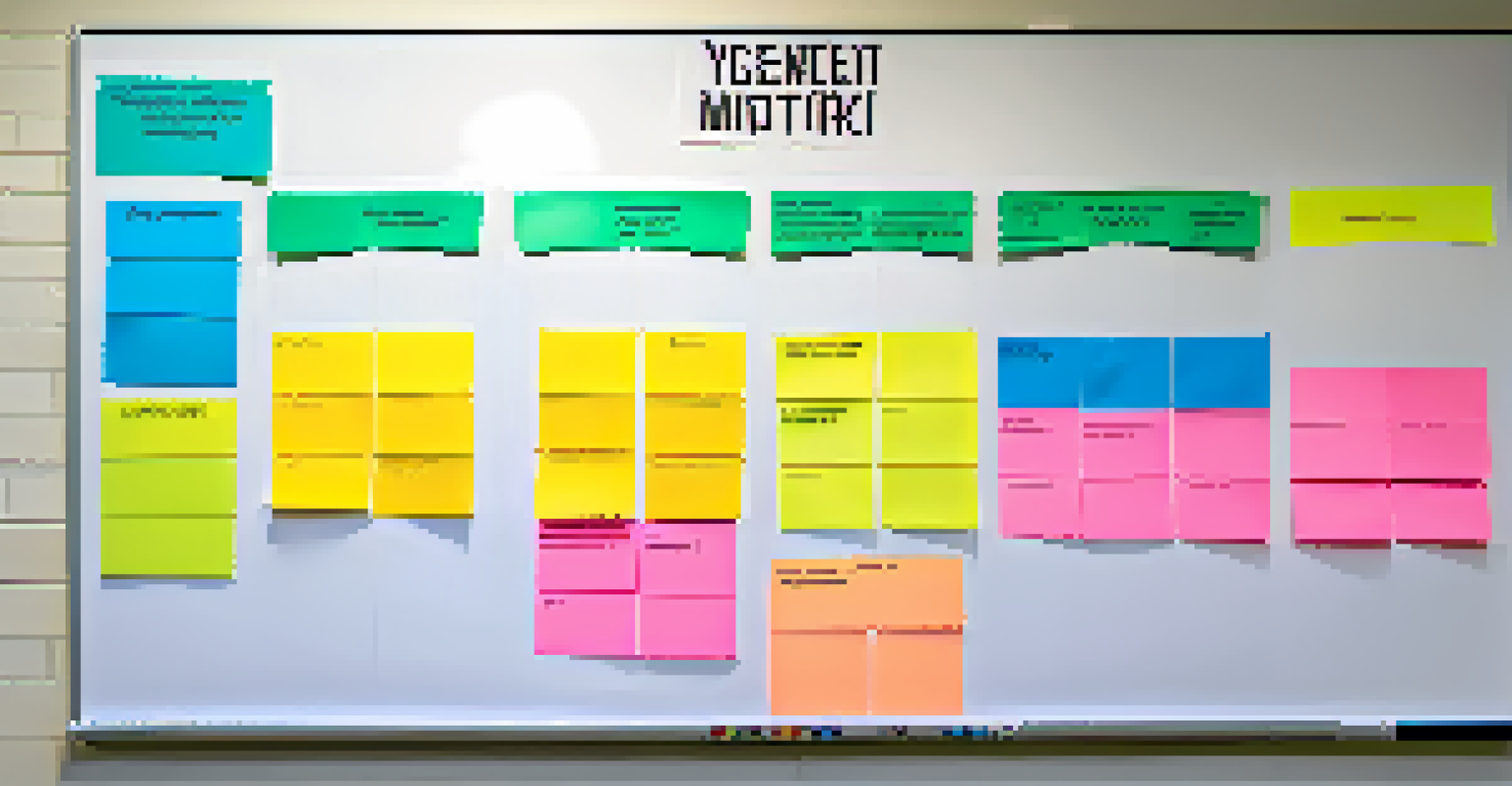Time Management Techniques to Overcome Procrastination

Understanding Procrastination and Its Impact
Procrastination is a common struggle, often stemming from fear of failure or overwhelm. It can feel like a heavy fog, clouding our ability to focus on tasks that matter. This delay not only hinders productivity but can also lead to increased stress and anxiety, creating a vicious cycle.
You cannot escape the responsibility of tomorrow by evading it today.
Recognizing procrastination is the first step toward overcoming it. Many people find themselves scrolling through social media or binge-watching shows instead of tackling their responsibilities. Understanding the reasons behind this behavior can help us develop strategies to break free from its grasp.
By addressing procrastination head-on, we can reclaim our time and energy. This journey begins with awareness, allowing us to identify triggers and patterns that lead to avoidance. Once we understand these patterns, we can implement effective time management techniques to steer ourselves back on track.
Setting Clear Goals to Combat Procrastination
Clear goals act as a compass, guiding us toward what we want to achieve. When our objectives are vague, it becomes all too easy to drift into procrastination. By setting specific, measurable, achievable, relevant, and time-bound (SMART) goals, we create a roadmap for success.

For example, instead of saying, 'I want to get fit,' a SMART goal would be, 'I will exercise for 30 minutes, four times a week for the next month.' This clarity not only motivates us but also makes the task at hand feel more manageable, reducing the chances of procrastination.
Recognize and Address Procrastination
Understanding the roots of procrastination helps in developing strategies to overcome it.
Moreover, breaking larger goals into smaller, actionable steps can further alleviate feelings of overwhelm. When we focus on completing one small task at a time, we can build momentum and tackle larger projects with confidence.
Prioritizing Tasks with the Eisenhower Matrix
The Eisenhower Matrix is a powerful tool for prioritizing tasks based on urgency and importance. By categorizing tasks into four quadrants—urgent and important, important but not urgent, urgent but not important, and neither urgent nor important—we can clearly see where to focus our efforts. This method helps prevent us from getting sidetracked by less critical tasks.
The secret of getting ahead is getting started.
For instance, if a task is both urgent and important, it should be tackled immediately. On the other hand, tasks that fall into the 'neither urgent nor important' category can often be eliminated altogether. This prioritization strategy not only helps us manage our time better but also reduces the feeling of being overwhelmed by numerous responsibilities.
By regularly assessing and adjusting our task list using the Eisenhower Matrix, we can stay aligned with our goals and minimize procrastination. This continuous evaluation keeps us accountable and focused on what truly matters.
Time Blocking: A Strategy for Structured Work
Time blocking is an effective technique that allocates specific blocks of time to individual tasks. By scheduling our day into chunks dedicated to specific activities, we create structure and minimize distractions. This method transforms our to-do lists into actionable plans, making it harder to procrastinate.
For example, you might block off 9 AM to 10 AM for emails and 10:30 AM to 12 PM for deep work on a project. Having a visual representation of our time helps prioritize our focus and reduces the temptation to multitask, which can often lead to procrastination.
Set SMART Goals for Clarity
Specific, measurable, achievable, relevant, and time-bound goals provide a clear roadmap to combat procrastination.
Moreover, time blocking allows for built-in breaks, which are essential for maintaining energy and motivation throughout the day. By giving ourselves designated times to rest, we can return to our tasks with renewed focus and clarity, further combating procrastination.
The Pomodoro Technique: Short Bursts of Focus
The Pomodoro Technique is a popular time management method that emphasizes working in short, focused bursts followed by brief breaks. Typically, you work for 25 minutes, then take a 5-minute break. This approach not only boosts productivity but also makes daunting tasks feel less overwhelming.
Imagine tackling a large project by breaking it down into 25-minute intervals. Each 'Pomodoro' allows you to focus intensely on a single task, knowing a break is just around the corner. This can significantly reduce procrastination as the time commitment feels manageable.
Additionally, these short breaks can provide an opportunity to recharge, preventing burnout and maintaining motivation. By incorporating the Pomodoro Technique into your routine, you can create a sustainable workflow that keeps procrastination at bay.
Eliminating Distractions for Better Focus
Distractions are one of the biggest culprits behind procrastination. In our fast-paced digital world, notifications, social media, and endless browsing can easily pull our attention away from important tasks. To combat this, it's essential to create a workspace that minimizes these distractions.
For instance, consider turning off notifications on your phone and computer while working. You might also designate specific times for checking emails or messages, rather than allowing them to interrupt your flow. By controlling your environment, you can foster a more focused mindset.
Utilize Time Management Techniques
Techniques like the Eisenhower Matrix and Pomodoro Technique help structure tasks and maintain focus, reducing procrastination.
Moreover, developing rituals or habits that signal it's time to work can help train your brain to concentrate. Whether it's a cup of tea, a specific playlist, or a quick meditation session, these cues can enhance focus and reduce the likelihood of procrastination.
Building Accountability for Lasting Change
Accountability can be a powerful motivator in the battle against procrastination. Sharing your goals with a friend, colleague, or mentor can create a support system that encourages you to follow through. Knowing someone else is aware of your commitments can provide the necessary push to stay on track.
Consider scheduling regular check-ins with your accountability partner to discuss your progress. This not only helps you stay committed but also provides an opportunity to celebrate achievements, no matter how small. Acknowledging progress fosters a positive mindset and reduces the urge to procrastinate.

Additionally, you might find it helpful to join a group or community with similar goals. Engaging with others who share your aspirations can provide both motivation and inspiration, making it easier to overcome procrastination together.